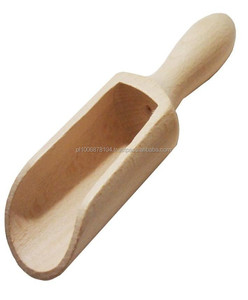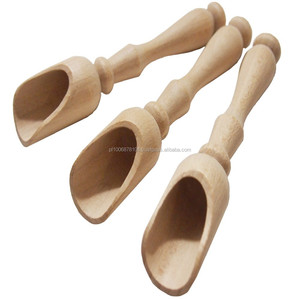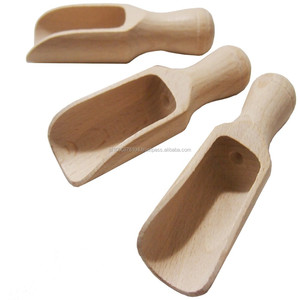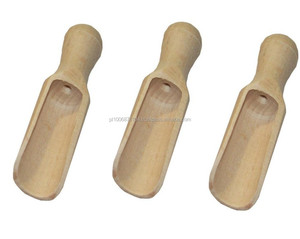(20263 products available)

























































































































































































Household wares are the various items and tools used within a home to facilitate daily living, cooking, cleaning, and organizing. They play a crucial role in ensuring comfort, efficiency, and functionality within a household. Household wares encompass a wide range of products, from cookware and utensils to furniture and decor. Here's a more detailed overview of household wares:
There are various household wares types, each serving different purposes within a home. Here's a breakdown of some common categories:
Cooking wares:
Cooking wares include cookware and tools used for meal preparation. Common cooking wares are pots, pans, baking dishes, and cooking utensils such as spatulas, ladles, and knives.
Dinner wares:
There are items used for dining and serving meals. This includes plates, bowls, glasses, and cutleries like forks, spoons, and knives. Serving wares, like platters and serving spoons, are also part of this category.
Laundry wares:
These are items used for washing clothes. They include laundry baskets for collecting and storing dirty clothes, clothes hangers for hanging clothes to dry, and laundry wares such as detergents and fabric softeners.
Cleaning wares:
Cleaning wares are tools and products used for cleaning and maintaining the household. This includes brooms, mops, brushes, vacuum cleaners, and cleaning agents like soaps, disinfectants, and detergents.
Furniture:
Furniture comprises large, movable household wares that provide comfort and functionality. Common furniture pieces include chairs, tables, beds, sofas, and cabinets.
Storage wares:
Storage wares are items used for organizing and storing household belongings. This includes cabinets, shelves, drawers, and containers.
Decor wares:
Decor wares are items that enhance the aesthetic and decorative aspects of the home. This includes wall art, vases, curtains, and decorative cushions.
Style and Aesthetic Appeal:
Household wares come in various styles to match different tastes. Classic designs often feature elegant lines, rich wood tones, and details like carvings. Modern wares focus on minimalism, clean lines, and innovative materials. Contemporary designs mix elements from different eras for those who appreciate a timeless look.
Color Options:
Household wares are available in a range of colors. Neutral colors like black, white, and brown are versatile and can fit any home. Many brands also offer trendy seasonal colors to keep things fresh. Customers can often choose custom colors to match their home decor.
Texture and Finish:
The feel of household wares can make a difference in how they are used. Smooth finishes are easy to clean, while textured surfaces provide a better grip. Options include polished, matte, or brushed finishes, and some products have special coatings for extra protection or non-stick properties.
Ergonomic Design:
With user comfort in mind, household wares are designed ergonomically. Comfort handles are easy to hold and use, while balanced weights make carrying simple. Visual and tactile cues help people understand how to use the product quickly and safely.
Multifunctionality:
For efficient use of space and resources, household wares are designed with multiple functions. Products like pans that also strain or bowls that convert to serving dishes allow users to prepare food in various ways. Such designs minimize the need for extra tools and reduce clutter.
Sustainability:
As the demand for eco-friendly products rises, household wares are designed with sustainability in mind. Recyclable materials and those that degrade naturally reduce environmental impact. Designs that allow for easy disassembly make recycling simpler. The use of renewable resources, like bamboo or recycled metal, supports greener production.
Household wares are the essential products used inside the home. These include cooking tools like pots, pans, cutlery, dishes, and storage containers. They also encompass cleaning items such as mops, brooms, detergents, and vacuum cleaners. Health and personal care products like toiletries, medicines, and grooming kits are household wares. Additionally, household furniture like beds, sofas, tables, and chairs, along with decorative pieces, are household wares. The applicability of household wares is vast and hence makes life easy and convenient.
Household wares find their usage in multiple scenarios. The first one is the culinary scenario. Cooking tools are imperative for meal preparation, serving, and food storage. Without these essential wares, cooking would be complicated. Cleaning scenarios also show the significance of household wares. Cleaning tools and items like brooms, mops, and vacuum cleaners are necessary to maintain proper cleanliness and hygiene within the home. Personal care and health scenarios are yet another important aspect of household wares. For ensuring health, personal care, and hygiene, items like medicines and toiletries are crucial. Household furniture and decor items are also household wares that have a significant role to play. They are necessary for providing comfort, support, and rest after a long day of work. Moreover, they also enhance the visual appeal of the home, making it look more welcoming and warm.
All of these scenarios highlight the importance of household wares in making life easier, convenient, and comfortable. From cooking to cleaning and from health to comfort, these wares are the unsung heroes that ensure the smooth running of daily life. As much as these wares are important, so is their quality. People must opt for high-quality household wares to ensure that their work is done in the best possible manner. For instance, durable cooking tools will last longer and serve better, while effective cleaning tools will ensure thorough cleaning.
From kitchen gadgets to bathroom essentials, every piece of household ware plays a vital role in enhancing convenience, safety, and overall quality of life. Choosing the right household wares ensures that a home is well-equipped, organized, and comfortable. Here are some important considerations to make when choosing household wares:
Safety and Health Standards:
Opt for household wares that comply with safety and health standards. Look for certifications on products, such as BPA-free for food containers, lead-free for ceramics and glassware, and flame-resistant for textiles. By prioritizing safe products, one can reduce the risk of accidents and protect the health and well-being of the household.
Quality and Durability:
Invest in quality household wares that are built to last. Choose products made from durable materials that can withstand regular use and provide good value for money in the long run. While it may involve a higher upfront cost, opting for durable wares saves the need for frequent replacements and contributes to long-term savings.
Functionality and Purpose:
Consider the specific needs and purposes of each household ware. Look for kitchen utensils that simplify cooking tasks, storage solutions that maximize space and organization, and cleaning tools that enhance efficiency. By choosing functional products, one can ensure that each item serves its intended purpose effectively.
Environmental Impact:
Be mindful of the environmental impact of household wares. Opt for products that are eco-friendly, such as reusable items, wares made from recycled materials, or those that can be recycled at the end of their life. Choosing environmentally conscious wares helps reduce waste and minimizes the overall carbon footprint.
Compatibility and Versatility:
Choose wares that are compatible with existing household items and can be used in multiple ways. Look for kitchen tools that work well with current cookware, storage solutions that fit into existing spaces, and cleaning tools that can be utilized throughout the home. By selecting versatile products, one can save space and ensure seamless integration within the household.
Q1: How can one ensure the quality and safety of household wares?
A1: Look for products that have been certified by relevant quality and safety organizations. Check for product labels that meet national and international standards. Choose reliable brands and retailers who prioritize quality and safety. Read consumer reviews and feedback to evaluate product performance. Educate oneself about quality and safety indicators to make informed purchasing decisions.
Q2: What are the trends in household wares?
A2: Among the trends, people want durable, eco-friendly household wares that are affordable, simple, and elegant. They want wares made from renewable resources. They like stylish designs that match their home decor. They prefer multi-use items that serve different purposes.
Q3: What are the ways to market household wares?
A3: Market household wares by using social media, influencer marketing, and content marketing. Use email marketing and search engine optimization (SEO) to reach customers. Consider pay-per-click (PPC) advertising to promote products. Use online marketplaces and affiliate marketing to expand reach. Use traditional advertising methods like print media and television commercials. Showcase products at trade shows and industry events.
The keyword "household ware" exhibits a stable average monthly web search volume of 210, with a notable one-year decline of 19%. Over the past three months, web search volumes have shown no change, indicating a period of stagnation in interest levels.
Analyzing the detailed monthly search data, fluctuations are evident, with web search volumes peaking at 260 in December 2023, January 2024, and August 2024, and dipping to a low of 170 in July 2024. This pattern suggests a seasonal variation, with peaks typically during the start and middle of the year, possibly influenced by holiday shopping and home renewal trends post-summer.
The trend of "household ware" web search volumes over the last 12 months reveals a cyclical nature with highs during specific months and lows in others. Despite the overall yearly decrease, the periodic increases suggest that while general interest may be waning, certain times of the year still spark significant consumer interest in household ware products. This data could be crucial for retailers and marketers in planning inventory and promotional strategies to capitalize on peak search periods.